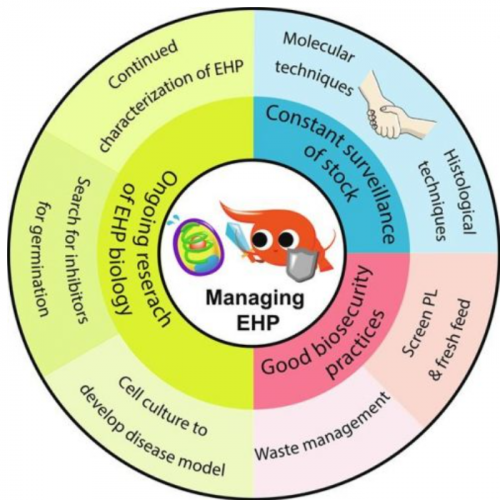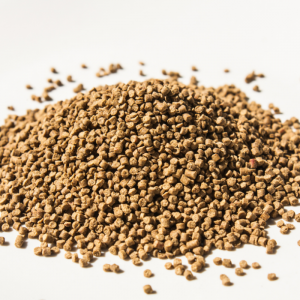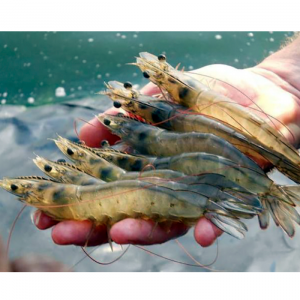
Update on EHP at The NACA Consultation on Strategies for Hepatopancreatic Microsporidosis
| Thu, 24 Jun 2021 - 15:31
Hepatopancreatic microsporidiosis caused by the microsporidian Enterocytozoon hepatopenaei (EHP) does not have any specific distinctive gross signs of infection. Infection is linked to unusually retardation in growth. Therefore, in the absence of other gross signs of disease, infection must be confirmed by microscopic or molecular methods (Flegel, 2015).
A recent publication gives the biology, pathology, diagnostics and control, summarising current knowledge of EHP infection and transmission dynamics and currently recommended, practical control measures that are being applied to limit its negative impact on shrimp cultivation Chaijarasphong et al.(2020). Authors indicated that the microsporidian was formally characterised in 2009.
The earliest detection was in early 1989 in the black tiger shrimp Penaeus monodon. Since mid-2010, infection with EHP became increasingly common in the Pacific white leg shrimp Penaeus vannamei. There are major gaps in knowledge which requires urgent attention to improve control measures.A grahical abstract for Chaijarasphong et al.(2020).

A graphical abstract for Chaijarasphong et al.(2020).
Over 2 days (9-10 February), the Network of Aquaculture Centres in Asia Pacific (NACA) conducted an online consultation on strategies for hepatopancreatic microsporidosis caused by EHP. The agenda included the status of EHP in the region, recent innovations and currently recommended strategies of control. Presentations on disease monitoring, surveillance and reporting on EHP in Asia as well as recent and current research studies were included.
Read more: Prevention of Desease Caused by EHP Spores on Shrimp
Dr Diva J. Aldama‐Cano, National Center for Genetic Engineering and Biotechnology (BIOTEC) underlined the magnitude of infection to this day. A cohort study in 2018, dealing with complex etiology for the early mortality syndrome (EMS) of 196 ponds gave unexpected results of high prevalence (60%) of EHP.
In a project on sampling of 509 ponds across 3 provinces (Chumphon, Rayong and Surat Thani) in Thailand, Dr Andy Shinn showed that EHP prevalence has been 84.3% over the period from August 2019 to December 2020. In 2019, surveying 135 farms and 451 ponds, 48.6% were infected and that infectivity was related to pond bottom conditions; in ponds equipped with shrimp toilets, the fully PE lined ponds were 61% positive for EHP as compared to 75% EHP positive for earthen ponds. Shinn cautioned, “We looked at 135 farms which is only a small portion of 21,500 farms in Thailand.”
“Thailand’s 2020 passive surveillance of shrimp farms, conducted quarterly, despite the pandemic, showed a rise in positive EHP cases in P. vannamei farms to 44% for October-December 2020 as compared to 33.7% in the same period in 2019. The equivalent was 52% for P. monodon farms (2020) and 11% (2019),” said Dr Jumroensri Thawonsuwan, Animal Health Research and Development Division (AAHRDD), Department of Fisheries (DOF), Thailand. However, she clarified that these data which came from walk-in samples of shrimp in a bad condition cannot be taken as the level of prevalence.
Control and prevention
Addressing farmer concerns on transmission routes, Cano discussed some concerns on the oral route of transmission. She quoted a recent study by Munkongwongsiri et al.(2020) indicating that spores are highly sensitive to heat inactivation and that after heating at 75°C for 1 min, the EHP spore extrusion rate and infectivity were abolished. Therefore, commercial feeds heated to reach a core temperature ≥75 °C should be regarded as posing no risk for EHP transmission. “Even though the product can be PCR positive, this does not equal to infectivity.”
Working on alternative routes of transmission, Cano noted the presence of active EHP spores in the water column. Untreated water contaminated with EHP can be a source of infection of naïve post larvae (PL12). One study showed that bivalve mussel Mytilopsis is a potential carrier of EHP.
Among the known disinfection methods, potassium permanganate (K2MnO4) for 15 min is most effective followed by chlorine, compared to formalin and ethanol. High temperatures of 75°C or -20°C can inactive the EHP spores. An increase to pH11 will trigger extrusion of the polar tube before it gets into contact with the cell and interrupt the infection process.
In a surveillance of EHP in farms, Shinn encourages farmers to do random checks on general health and during the early stages, to sample different parts of the pond as infection may be patchy. Sample sizes recommended are 3 lots of 100PL within 30 days and 3 lots of 10 shrimp within 60 days. Online he showed how to dissect out the hepatopancreas and gut. Shinn said that where the HP meets the gut is where spores can be found. Spores are clearly seen with phloxin B staining. He added that treatments in infected ponds needs to be double prong and continuous.
Read more: Transcriptomic Analysis of Pacific White Shrimp in Response to AHPND
Some critical steps to prevent EHP spores at the hatchery level included an effective disinfection which requires tanks to be soaked and associated pipework flushed with 2.5% sodium hydroxide for 3 hours and followed by a complete dry out for 7 days, said Jumroensri. An increase of pH to >9 results in 90% of spores unable to infect host cells. Farmers are encouraged to buy post larvae from DOF’s whitelist hatcheries.
DOF has a cleaning up project, using real time PCR diagnostics on PL10 in the hatchery and nursery segment. The number of hatcheries in the whitelist rose to 366 in 2020 from 171 in 2019.
On prevention at the grow-out level, disinfection of pond bottom was recommended with calcium oxide to reach pH > 9 and in water and sediment with >15 ppm K2MnO4 or >40ppm chlorine. On control steps, Shinn reiterated that vertical control is more effective than horizontal action. Other approaches reported by Shinn was using hot steamers on pond liners and propane burners to scorch the pond sediment.
In a report on outbreaks in the Philippines, Dr Sonia S. Somga, Bureau of Fisheries and Aquatic Resources (BFAR) said that there are no distinct clinical signs in EHP infected shrimp except with slow growth. Mortalities occurred with co-infection with white spot syndrome virus (WSSV) but none was reported when the co-infection was with infectious hypodermal and haematopoietic necrosis virus (IHHNV).
On hatchery management practices in the Philippines, Somga reported steps such as disinfection with 90-98% HCL and for for tubes, valves and pipes with chlorine. BFAR issues health certificates for transboundary movement of post larvae. BFAR conducts screening for broodstock at 1% but not more than 10 broodstock.
Some farm management methods in the Philippines include the application of probiotics in feeds at 2g/kg feed. Disinfection of infected ponds is recommended at 30-40 ppm chlorine. There are unknowns on EHP which Cano says include questions on life stages in other hosts, alternate modes of transmission in shrimp and are there more ways for spore inactivation? Can there be therapeutic treatments?

Size variation presented by Andy Shin

Featured image. Andy Shinn says that by adding a drop of phloxin B, and leaving for 5-10 minutes, spores are clearly seen
Size variation presented by Andy Shinn Featured image. Andy Shinn says that by adding a drop of phloxin B, and leaving for 5-10 minutes, spores are clearly seen.
Shinn has calculated that losses of USD 387.9 to USD 555.8 million in 2019 because EHP infections lowered harvest size to 13g from 18g and raise by 23.2% production costs (FCR was 1.47 in infected ponds, versus 1,39 in uninfected ponds). In 2019 shrimp production for Thailand was 304,000 tonnes. “Size variation, slow growth and FCR is often the first sign of a problem,” said Shinn.
Sumber: Aquaculture Asia Pacific






















